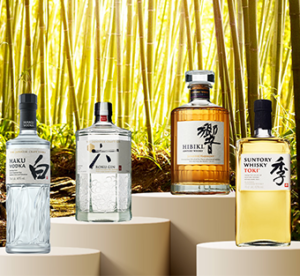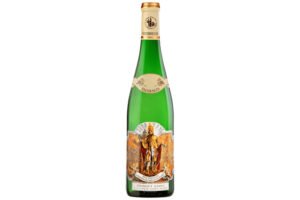Sweet or Spiked, Sorrel’s Appeal Goes Way Beyond the Holidays

[ad_1]
“I didn’t realize sorrel was even a holiday thing until maybe ten years ago,” says Kevin Chinn, operations manager for Negril Jamaican Eatery, a collection of Jamaican takeout restaurants with locations in Washington, D.C. and Maryland. His father opened the first location in 1979, serving sorrel alongside golden brown coco bread, spicy jerk chicken sandwiches and homemade beef patties. “It was just always around.”
With its evocative red color and tart flavor, sorrel is a familiar sight in many Caribbean communities where it’s sold in small bottles in shops, or behind a takeout counter in a beverage dispenser or at get-togethers. But the holidays are where the drink shines, becoming part of the festivities, served in party punch bowls, sometimes with rum or red wine and sometimes without. Though not exclusively consumed in December, sorrel is a holiday tradition on many Caribbean islands and in Caribbean communities around the world, offering Caribbean immigrants a taste of home outside of the holidays.

The drink is made from the roselle plant, a relative of hibiscus and okra. There are conflicting stories of where roselle originates, but it grows mostly in India, West Africa and Malaysia. It was brought to the modern-day Americas during the Transatlantic slave trade, where it was able to be planted. The plant’s waxy blossoms are dried, steeped like tea and combined with spices and sugar to create sorrel. The drink has different names in different parts of the world: sorrel in the United States and Caribbean; bissap, sobolo or zobolo in west Africa; or flor de jamaica in Central America and Mexico. In all of those places, it’s a slightly acidic red drink that can be non-alcoholic or spiked with the addition of rum and even tequila.
“You can trace the origins of sorrel back 500 years,” says Jackie Summers, founder and CEO of Sorel Liqueur, a shelf-stable liqueur based on the drink. He remembers looking forward to having sorrel during the West Indian Day Parade in Brooklyn, an annual day festival with food trucks and music celebrating Caribbean culture. “I wanted the food, the roti and the patties and the curried goat, the sorrel,” he says.
As he got older and learned more about the beverage he realized there was so much more history to this bright red drink. “Our ancestors knew the benefits of hibiscus, and the knowledge of what this plant was and what it can do traveled to the Caribbean,” he says.

The Caribbean is where the Transatlantic slave trade and the spice trade converged, creating variations on the beverage, Summers says. In Jamaica, recipes for sorrel include ginger, cardamom, allspice, spices similar to what shows up in unctuous, fatty jerk pork and drum chicken. In Trinidad, sorrel is flavored with clove, cinnamon and nutmeg, speaking to the influence of India on the island’s cuisine. And in Barbados, where Summers’ family hails from, a glass of sorrel has likely been given a boost thanks to rum. “In Barbados there’s rum in everything,” he laughs.
The “rules” of making sorrel in your own home are to know the history and then taste as much as possible until you land on what you like. The flexibility of sorrel to fit the preferred flavor profile of whomever is making it, is why it’s so enjoyable. Some homes make it with ginger, cinnamon, clove and plenty of brown sugar, while others add red wine.
Chinn recommends playing with those spices to find the mixture that works for you. At Negril, he says the brew is spicy because of a one to one ratio of hibiscus to ginger with a touch of pimento, or allspice.
“But don’t go overboard,” he warns. “Make sure you strain it twice and wash the flowers really good because they can get dirty.”
Once you have the flavor profile and sweetness you’re looking for you can treat it as a base and add rum or wine if you’d like, he says. “A lot of times I leave it non-alcoholic and then add an ounce of rum to my cup.”
“Our ancestors knew the benefits of hibiscus, and the knowledge of what this plant was and what it can do traveled to the Caribbean.” —Jackie Summers, Sorel Liqueur
It’s all part of what makes sorrel so special: from island to island, and even house to house on each island, sorrel is an expression of the person that’s making it, completely customizable. Like many dishes on a holiday table, your family’s sorrel tastes different from another family’s version.
And it’s a tie to the many places this red beverage has touched throughout history. “It’s a terrific story of perseverance,” Summers says. “There’s a place in the culinary firmament where this beverage belongs and I want to honor that story.”

Sorrel Drink Recipe
Consider this a sorrel rubric to customize according to your tastes and maybe spike with your favorite spirit. It’s called “bissap” in the book The Rise by Marcus Samuelsson with Osayi Endolyn. This recipe makes two quarts and will keep in the refrigerator for up to a week.
Sorrel Drink Ingredients
2 quarts water
2 cups dried sorrel (hibiscus) petals
1-inch piece fresh ginger, peeled and sliced
½ cup sugar
Sorrel Drink Instructions
Bring the water just to a boil in a large pot set over high heat. Add the hibiscus and ginger and boil for 1 minute. Remove from the heat, cover, and allow to steep for 15 minutes. Strain through a fine mesh strainer into a large, heat-proof container. Add the sugar and stir until dissolved. Add 1 cup ice and refrigerate until chilled completely. Serve over ice.
Excerpted from The Rise by Marcus Samuelsson with Osayi Endolyn. Recipes with Yewande Komolafe and Tamie Cook. Copyright © 2020 by Marcus Samuelsson. Photographs by Angie Mosier. Used with permission of Voracious, an imprint of Little, Brown and Company. New York, NY. All rights reserved.
[ad_2]






